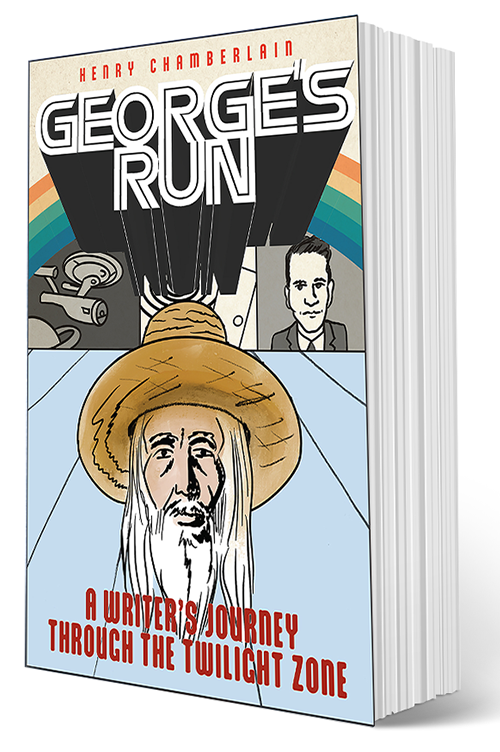
Roger Corman’s “The Intruder,” featured in the graphic novel, “George’s Run.”
Roger Corman (1926-2024) was a dedicated filmmaker who, by just doing what he loved, managed to carve out a place in cinema history. At the end of the day, he’s one of the great indie film mavericks, whether you happen to be a fan of the B-movie horror genre or not. Heck, the guy practically invented it! Corman addressed what he was doing as a business as much, or more so, than an art pursuit. For the most part, his movies were meant to entertain with chills and thrills for a teen audience at a drive-in.

Charles Beaumont’s controversial novel was a risky choice to adapt into film.
That said, from time to time, his films would demonstrate more than a strict profit motive. In fact, in 1962, you would have been hard pressed to find any movie director who would have considered adapting Charles Beaumont‘s 1959 incendiary novel, The Intruder, an indictment on racism in America. It was not the sort of novel that promised any profit but certainly promised a lot of trouble.

From George’s Run: George and Bill find themselves cast in “The Intruder.”
Despite all the risks (the film was shot in the rural south), Corman went full steam ahead and made a movie that didn’t return anything close to a profit until decades later when it was rediscovered by film enthusiasts.

Before Star Trek, William Shatner starred as the racist villain in “The Intruder.”
Now, here is where some folks might conflate Roger Corman with being attached to science ficiton. No, he was a horror guy but he did cast William Shatner in the lead role in The Intruder as the villain, the outside agitator who stirs up racial unrest in a sleepy little town. Before Star Trek, our very own Captain Kirk was a ruthless and spineless villain!

This is the book for any fan of comics, pop culture, and great stories!
It is my honor to include the story of the making of The Intruder in my graphic novel, George’s Run, published by Rutgers University Press. I can appreciate how it’s easy to conflate the various players during the ’60s, a highly creative time in both television and film. In this case, the players, genres and mediums all seem to blend in together as you have two pivotal talents, television writers George Clayton Johnson and William F. Nolan, participating as actors in a film that is based on a novel by another key writer, Charles Beaumont, who was a central cohort of the group of writers who worked separately and together on various projects, including the original Twilight Zone and Star Trek. And then, just to add to the multi-layered and high octane theme, you have William Shatner leading the way. I’m sure all of this creative energy and artistic passion was not lost on Roger Corman. It was quite a fortuitous combination of talents and viewpoints and Corman must have given it all a confident nod. Full steam ahead.























